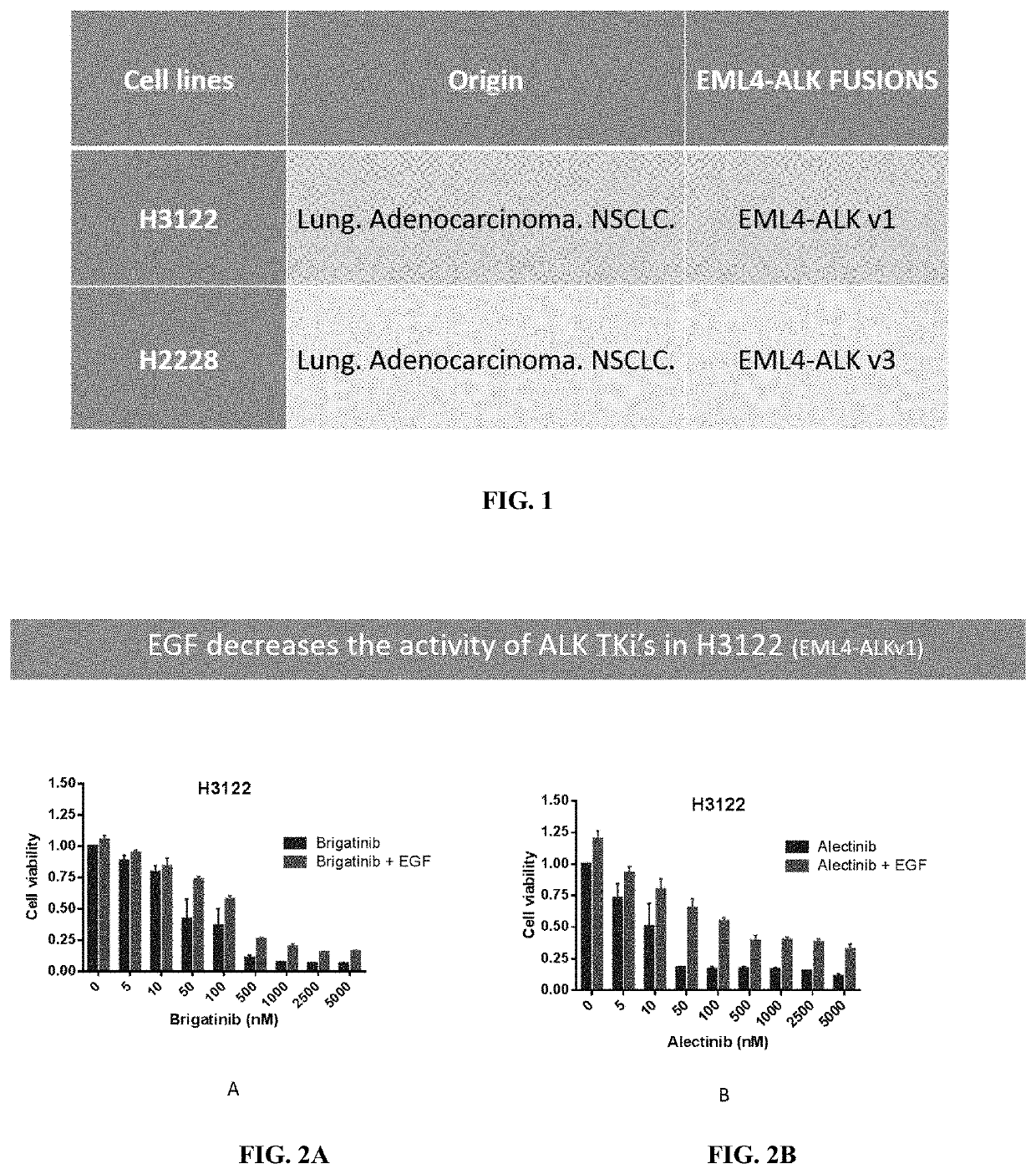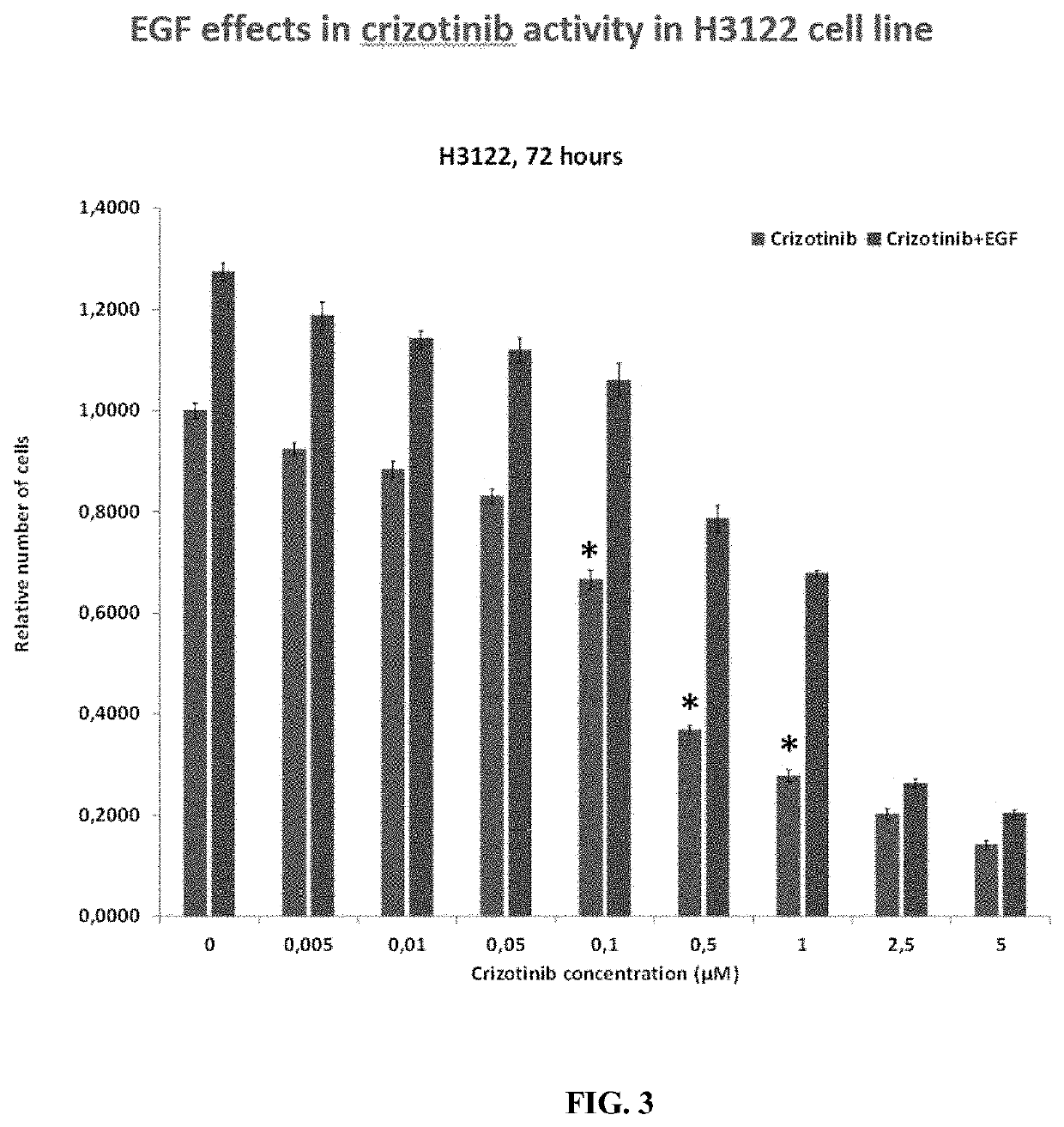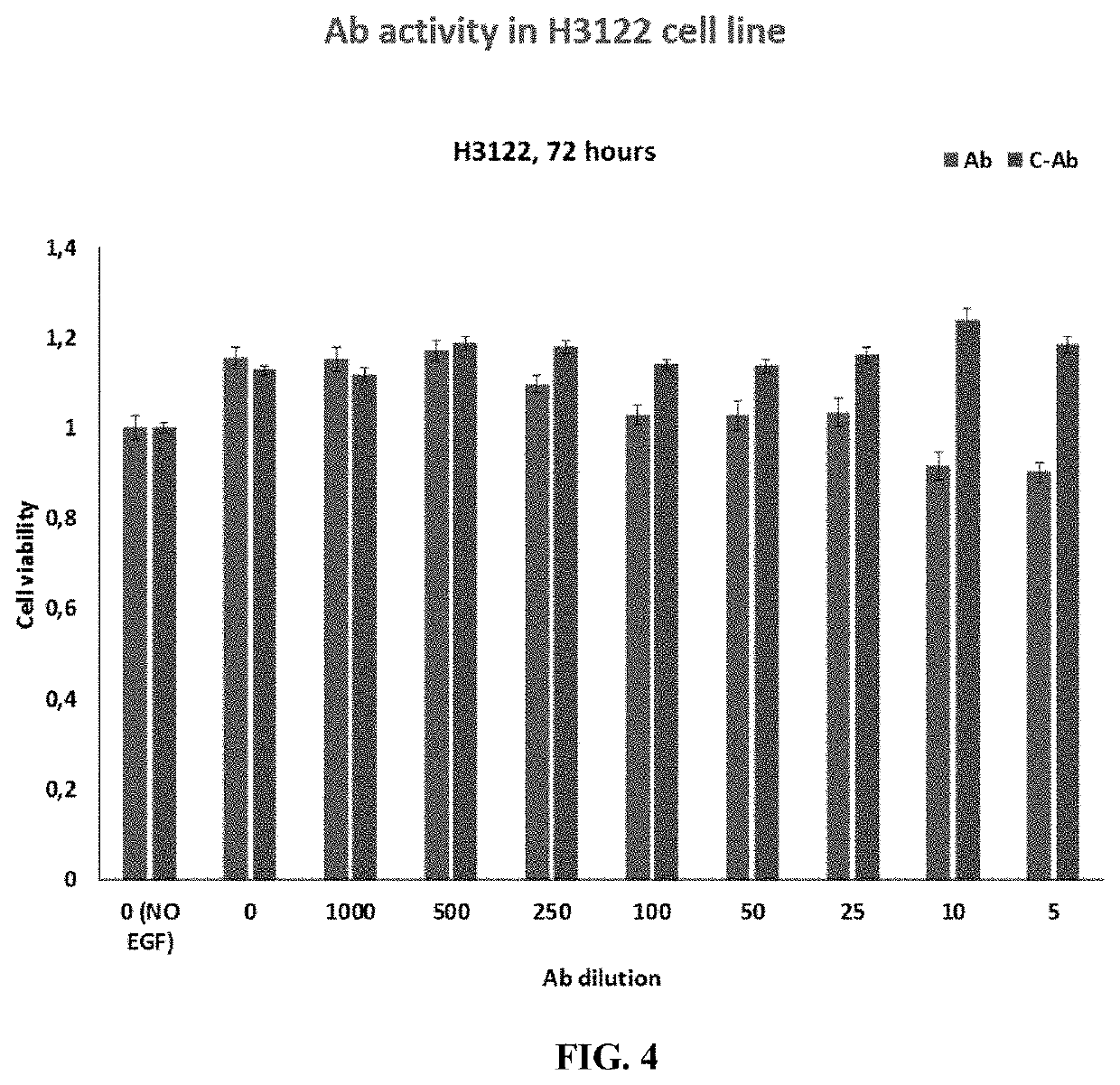Methods and compositions for inhibition of egf/egfr pathway in combination with anaplastic lymphoma kinase inhibitors
a technology of anaplastic lymphoma and inhibitors, which is applied in the direction of drug compositions, antibody medical ingredients, lung cancer vaccines, etc., can solve the problems of poor outcome, unsatisfactory current chemotherapy, and troubling prognosis for the majority of patients diagnosed with cancer
- Summary
- Abstract
- Description
- Claims
- Application Information
AI Technical Summary
Benefits of technology
Problems solved by technology
Method used
Image
Examples
example 1
f the Combination of ALK Inhibitors and Anti-EGF Antibodies in Non-Small Cell Lung Carcinoma Cell Lines
[0191]Patients treated with ALK TKI's achieve a longer progression-free survival period compared to EGFR mutated patients treated with EGFR TKI's. In the clinic, 20 to 30% of patients rapidly become resistant. It is not known however if these patients become resistant or are never responsive. It is also unclear what the effect is of circulating EGF in these patients. The instant disclosure addresses the effect of EGF on TKI resistance, employing two cell lines containing the main ALK rearrangements of NSCLC patients
[0192]The effects of BVN22E antibodies in combination with the following ALK TKIs—Crizotinib, Alectinib and Brigantinib—were tested on two cell lines containing the main ALK rearrangements of NSCLC patients. ALK “rearrangements” refers to a number of different mutations. These lines are shown in FIG. 1: 11H3122 lung adenocarcinoma containing EML4-ALK fusion variant v1 an...
example 2
t of the combination of anti-EGF antibodies and Trametinib in BRAF and KRAS mutation cell lines.
[0206]Colorectal cancer (CRC) is not only one of the most widely common tumorous cancers, but is also known to be particularly challenging to treat. CRC Patients without KRAS mutations can be treated with therapies targeting EGF such as Cetuximab and Erlotinib in the clinic. However, there is a large cohort of CRC patients harboring KRAS mutations, BRAF mutations or PIK3CA mutations. There are currently no effective treatments available for those patients. Chemotherapy and angiogenesis targeting are commonly used but have significant drawbacks.
[0207]To begin to address the need for treatment of CRC patients with KRAS, BRAF, or PIK3CA mutations, EGF antibodies in combination with the MEK inhibitor, Trametinib, were tested in vitro in cell lines with the aforementioned mutations. All experiments were conducted in combination with antibodies to BVN22E.
[0208]Cell viability of HT29, also a col...
example 3
t of Sera from Patients Immunized with EGF Cancer Vaccine in Sw900 Cells
[0230]The effect of human patient (22180004) anti-EGF sera on pEGFR in SW900 wild type cells was observed in the presence of EGF. 2a=patient before vaccination, 3d=patient after vaccination. Complete inhibition of pEGFR activation was observed in the presence of anti-EGF sera, and some decrease in pERK1 / 2 was also observed, see FIG. 70. The effect of human patient anti-EGF sera from two additional patients on pEGFR in SW900 wild type cells was observed in the presence of EGF, see FIG. 71. Significant inhibition of pEGFR and pERK1 / 2 activation were observed in patient 27030004, while a lesser inhibition of both was observed in patient 29080005. The results of anti-EGF sera from three additional patients are shown in FIG. 72. For two of the patients (29040007 and 33080020), a significant inhibition of pEGFR and pERK1 / 2 signaling was observed. For patient 31070004, a minimal change was observed. The results of FIGS...
PUM
| Property | Measurement | Unit |
|---|---|---|
| Time | aaaaa | aaaaa |
| Time | aaaaa | aaaaa |
| Mass | aaaaa | aaaaa |
Abstract
Description
Claims
Application Information
 Login to View More
Login to View More - R&D
- Intellectual Property
- Life Sciences
- Materials
- Tech Scout
- Unparalleled Data Quality
- Higher Quality Content
- 60% Fewer Hallucinations
Browse by: Latest US Patents, China's latest patents, Technical Efficacy Thesaurus, Application Domain, Technology Topic, Popular Technical Reports.
© 2025 PatSnap. All rights reserved.Legal|Privacy policy|Modern Slavery Act Transparency Statement|Sitemap|About US| Contact US: help@patsnap.com



